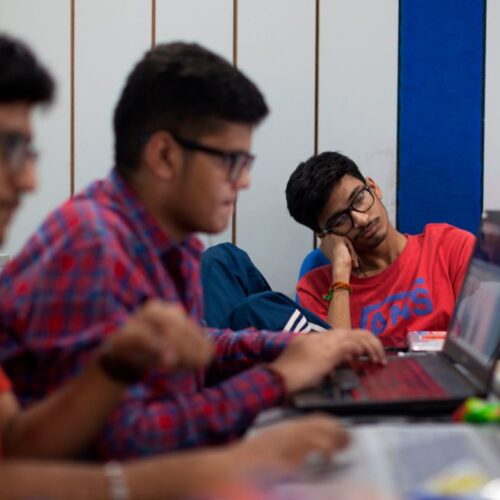The New ‘Kamen Rider’ Will Stream In the US, Too

When 'Kamen Rider Zeztz' begins in a few months, Toei is bringing it straight to US audiences alongside other territories.




Here at this website, my colleagues and I follow our beats closely, from wearable tech and laptops to influencer culture and federal policy. Last year, I asked a bunch of staff at The Verge to pretend to be trend forecasters for a lighthearted collection of what's hot and what's not. Some of the predictions really held up: many would say the US Supreme Court continues to be out, congestion pricing in New York is decidedly in despite attempts to kill it, and cats are, as ever, a bit of both.
Predicting future trends - and having a pulse on what's happening now - is part art, part science, and, if we're being honest, part wish fulfillment. He …



The world of Chromebooks has its MacBook Air.
Lenovo's latest Chromebook Plus 14 is an Arm-based thin-and-light with good specs, excellent battery life, a great keyboard, all-around solid build, and a fantastic OLED screen. But the best part is that its bright and punchy 14-inch panel comes standard on the base $649 configuration or as a touchscreen for $749.
That's cheaper than both the OLED-equipped Samsung Galaxy Chromebook Plus and Acer Chromebook Plus Spin with an IPS screen. It's also faster than either with more RAM.
The new Chromebook Plus 14 could be a go-to laptop for just about anyone - if you're okay living with ChromeOS in …
Dmitri Mendeleev famously saw the complete arrangement of the periodic table after falling asleep on his desk. He claimed in his dream he saw a table where all the elements fell into place, and he wrote it all down when he woke up. By having a eureka moment right after a nap, he joined a club full of rather talented people: Mary Shelley, Thomas Edison, and Salvador Dali.
To figure out if there’s a grain of truth to all these anecdotes, a team of German scientists at the Hamburg University, led by cognitive science researcher Anika T. Löwe, conducted an experiment designed to trigger such nap-following strokes of genius—and catch them in the act with EEG brain monitoring gear. And they kind of succeeded.
“Thomas Edison had this technique where he held a cup or something like that when he was napping in his chair,” says Nicolas Schuck, a professor of cognitive science at the Hamburg University and senior author of the study. “When he fell asleep too deeply, the cup falling from his hand would wake him up—he was convinced that was the way to trigger these eureka moments.” While dozing off in a chair with a book or a cup doesn’t seem particularly radical, a number of cognitive scientists got serious about re-creating Edison’s approach to insights and testing it in their experiments.


© XAVIER GALIANA





Samsung’s Galaxy Z Flip 7 looks to be a bigger surprise than initially expected, with the first hands-on leak confirming reports of a bigger cover display and thinner hardware, and it looks good.
more…For two decades, ranking on Google meant playing a familiar game: stuff in some keywords, build backlinks, cross your fingers, and wait for traffic. That playbook built entire businesses. But the rules have changed, and the old tricks just don’t […]
The post How to Write Content That Ranks High in AI Search Engines (2025 Guide) first appeared on Tech Startups.



